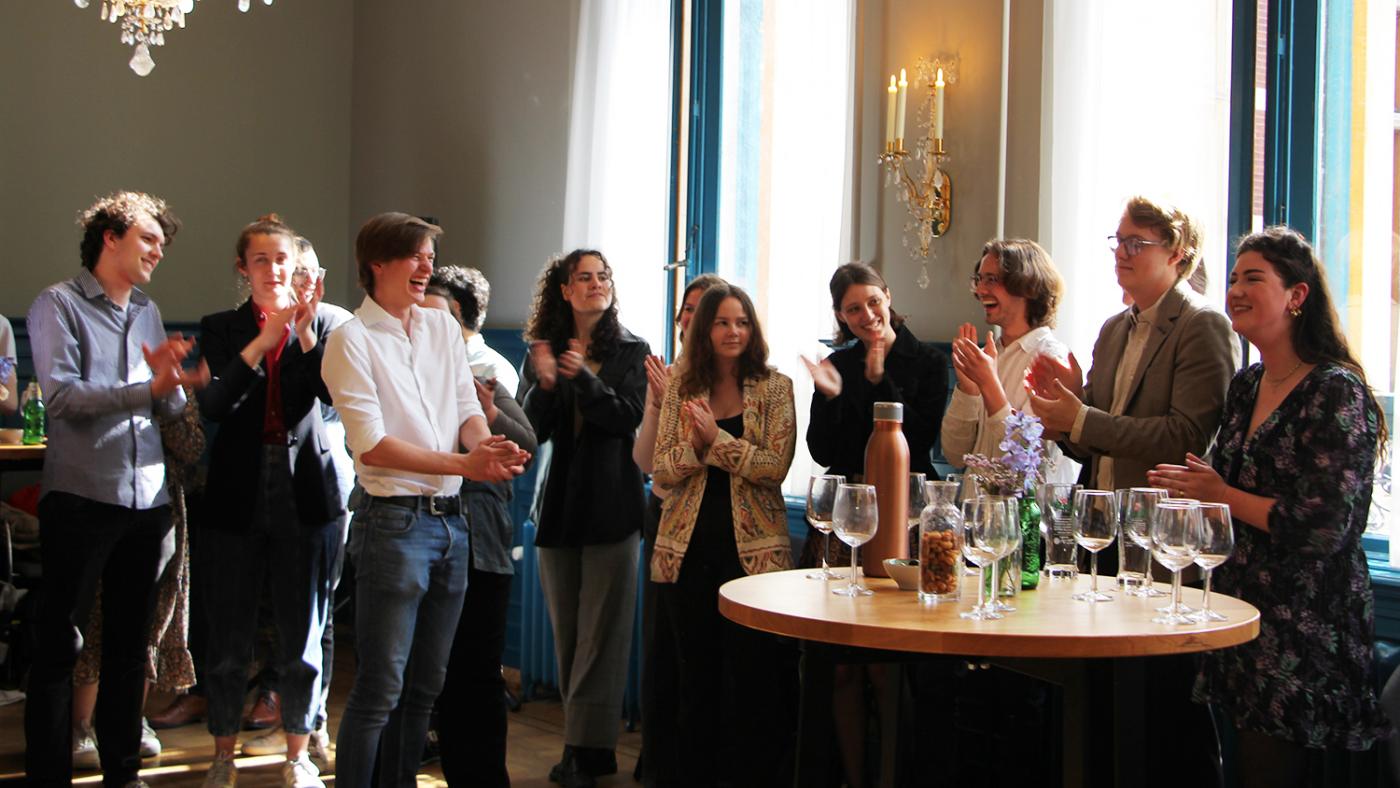UU Council elections
Vuur wins seven student seats, Vlam is the big winner among employees

Last week, UU employees and students voted for their favourite candidates in the elections for the UU Council. The turnout was a bit higher than last year.
The student party Lijst Vuur received 2,599 votes, guaranteeing seven seats in the council — that's two seats more than the Partij voor de Utrechtse Student (the Party for the Utrecht Student, or PvdUS in the Dutch acronym, Ed.) which got 2,180 votes. The results were announced by the chair of the election committee, Lukas van den Berge, in the Utrecht University building.
This means that the proportion of seats reserved for each party is not going to change. However, although Vuur won seven seats last year, it only occupied six because there were not enough candidates. The remaining seat was given to PvdUS. This year, Vuur does have enough candidates, so in practice they won one seat.
Teresa Pappalardo, Vuur's party leader, got the most votes: at least 345. She is one of the two international students who were running this year. Internationalisation, diversity and inclusion are the topics she'd like to delve into as a council member. She would also like to work towards a financially accessible and sustainable campus. "We're so happy about our win," she says. "We weren't expecting it. The difference in relation to the other student party is really small."
Resounding victory
Employees also cast their vote in these elections, although they had less choices this time: the party UUinActie didn't manage to find enough candidates, so it didn't participate in this year's elections.
Vlam emerged victorious from the battle against the UPP, the PhD candidates' party, but it is used to being a superpower in the council. This year, the party is getting two additional seats, going from seven to nine. This means that Vlam obtained almost all employee seats. UPP only got two seats.
The elections were divided into four different districts. UPP does quite well in the Sciences and Veterinary Medicine districts, which scored the party's two seats. In the remaining districts, all seats went to Vlam. There were no elections in the Medicine district because there was only one candidate. The candidate with the most votes was the associate professor Eleni Braat, from the Faculty of Humanities, who obtained 355 votes.

Party leader T eresa Pappalardo (in the centre of the photo) moments before the results were announced. Photo: DUB
Turnout
The turnout for the University Council elections had been dropping year after year, reaching its lowest point last year, when only 11 percent of UU's students voted.
This year, more students found their way to the ballot. In total, 4,985 students voted — that's 14.1 percent of the total number of voters. Even so, the percentage didn't come close to that of previous years, when the students represented around twenty percent of all voters. The best years were 2017 and 2018, when 26 percent of voters were students.
As for employees, turnout had also been on a downward trend for years, but it did slow down this year. This year, 2,183 employees cast a vote. That's 27.2 percent, which means that the turnout percentage is not higher than in 2021 (27.1 percent). More blank votes were cast for the staff section of the council, however: about 3.9 percent of the votes, to be more exact. Among students, the percentage of blank votes was much smaller: 0.6 percent.